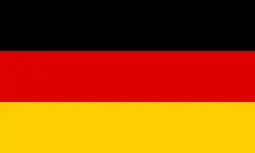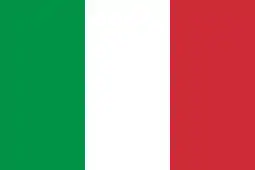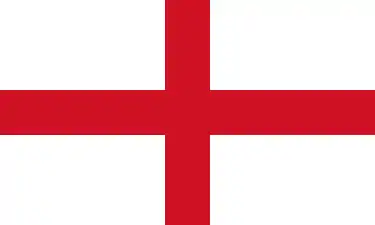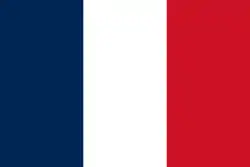Mariánské Lázně
Mariánské Lázně (Czech pronunciation: [ˈmarɪjaːnskɛː ˈlaːzɲɛ]; German: Marienbad) is a spa town in Cheb District in the Karlovy Vary Region of the Czech Republic. It has about 13,000 inhabitants. Most of the town's buildings come from its Golden Era in the second half of the 19th century, when many celebrities and top European rulers came to enjoy the curative carbon dioxide springs. The town centre with the spa cultural landscape is well preserved and is protected by law as an urban monument reservation. In 2021, the town became part of the transnational UNESCO World Heritage Site under the name "Great Spa Towns of Europe" because of its springs and architectural testimony to the popularity of spa towns in Europe during the 18th through 20th centuries.[2][3]
Mariánské Lázně | |
|---|---|
 Colonnade with Singing Fountain | |
 Coat of arms | |
 Mariánské Lázně Location in the Czech Republic | |
| Coordinates: 49°57′53″N 12°42′4″E | |
| Country | |
| Region | Karlovy Vary |
| District | Cheb |
| First mentioned | 1273 |
| Government | |
| • Mayor | Martin Kalina (Piráti) |
| Area | |
| • Total | 51.79 km2 (20.00 sq mi) |
| Elevation | 578 m (1,896 ft) |
| Population (2021-01-01)[1] | |
| • Total | 12,752 |
| • Density | 250/km2 (640/sq mi) |
| Time zone | UTC+1 (CET) |
| • Summer (DST) | UTC+2 (CEST) |
| Postal code | 353 01 |
| Website | www.marianskelazne.cz |
| Part of | The Great Spa Towns of Europe |
| Criteria | Cultural: (ii)(iii) |
| Reference | 1613 |
| Inscription | 2021 (44th Session) |
Administrative parts
The town is made up of town parts and villages of Mariánské Lázně, Hamrníky, Chotěnov-Skláře, Kladská, Stanoviště and Úšovice.
History

German settlers were called into this region by Bohemian rulers from the Přemyslid dynasty in the 12th Century.
_-_houses_in_center.jpg.webp)
Although the town itself is only about two hundred years old, the locality has been inhabited much longer. The first written record dates back to 1273, when there was a village of Úšovice. The springs first appear in a document dating from 1341 where they are called "the Auschowitzer springs" belonging to the Teplá Abbey. It was only through the efforts of Josef Nehr, the abbey's physician, who from 1779 until his death in 1820 worked hard to demonstrate the curative properties of the springs, that the waters began to be used for medicinal purposes. The place obtained its current name of Marienbad in 1808; became a watering-place in 1818, and received its charter as a town in 1868.[4]
By the early 20th century, approximately 1,000,000 bottles of mineral water were exported annually from Marienbad.[4] The water from the Cross Spring (Kreuzquelle, Křížový pramen) was evaporated and the final product was sold as a laxative under the name of sal teplensis. The modern spa town was founded by the Teplá abbots, namely Karl Kaspar Reitenberger, who also bought some of the surrounding forests to protect them. The inhospitable marshland valley was changed into a park-like countryside with colonnades, neoclassical buildings and pavilions around the springs.
The name Marienbad first appeared in 1786; since 1865 it has been a town. Then came a second period of growth, the town's Golden Era. Between 1870 and 1914 many new hotels, colonnades and other buildings were constructed or rebuilt from older houses. In 1872 the town got a railway connection with the town of Cheb and thus with the whole Austro-Hungarian Empire and the rest of Europe.
The town soon became one of the top European spas, popular with notable figures and rulers who often returned there. Among them were such names as Johann Wolfgang Goethe, Frédéric Chopin, Thomas Edison, Richard Wagner or Prince Friedrich of Saxony, King Edward VII of the United Kingdom, the Russian Czar Nicholas II, and Emperor Franz Joseph I and many others.[5] At that time, about 20,000 visitors came every year. It was also a popular resort and vacation venue for European rabbis and their Hasidic followers, accommodating their needs with kosher restaurants, religious prayer services, etc.[6]
Marienbad remained a popular destination between World War I and World War II. After World War II, the ethnic German population of the town was forcibly expelled according to the Potsdam agreement, thereby emptying the town of the majority of its population. After the communist coup-d'état in 1948, it was sealed off from most of its foreign visitors. After the return of democracy in 1989 much effort was put into restoring the town into its original character. Today it is a spa town and a popular holiday resort thanks to its location among the green mountains of the Slavkovský les and the Český les, sport facilities (the town's first golf course was opened in 1905 by the British King Edward VII) and the proximity to other spa towns, such as Karlovy Vary (Carlsbad) or Františkovy Lázně (Franzensbad).
Demography
Until their expulsion in 1945 the majority of the population of the town were German (see Sudetenland). Afterwards, the Czechoslovak authorities repopulated the town with Czechs from the hinterland.
As of 2021, with an average age of 46.2 years, the town has one of the oldest populations in the country, and the oldest in category of towns over 10,000 inhabitants.[1]
|
|
| ||||||||||||||||||||||||||||||||||||||||||||||||||||||
| Source: Historical lexicon of municipalities of the Czech Republic[7] | ||||||||||||||||||||||||||||||||||||||||||||||||||||||||
Sights
Mineral springs and colonnades

The top attraction of the town is its 100 mineral springs (53 of them are tapped) with high carbon dioxide content and often also higher iron content, both in the town itself (40 springs) and its surroundings.[8] The water in the springs has an average temperature of 7-10 degrees C, and is formed through interactions with the deep fault lines that run under the region.[8] The mineral water is claimed to cure disorders of the kidneys and of the urinary tract, respiratory disorders, locomotive system disorders, metabolic disorders, oncological disorders and gynaecological disorders, including the treatment of sterility.[9]
Many of the springs have pavilions and colonnades built around them. Among them are:
- Křížový pramen (Cross Spring) – a monumental pavilion with a cupola bearing a patriarchal cross and 72 Ionic columns was built over the spring in 1818–1826. Today's concrete building is a copy from 1911–1912, originally it was a light wooden and brick construction. The water from the spring is highly mineralized with a strong laxative effect, and has been used for both curative drinks and baths.
- Rudolfův pramen (Rudolph's Spring) – with a wooden pavilion built over the spring, some water is tapped and piped to the nearby colonnade and some is bottled. Its water is weakly mineralized with high calcium content and has been used to cure urinary problems.
- Karolinin pramen (Caroline's Spring) – named after the wife of the Emperor Francis I, Caroline Augusta. The nearby colonnade was built in 1869, the pavilion is a reconstruction from 1989. The water is weakly mineralized, with higher magnesium content.
- Ferdinandův pramen (Ferdinand's Spring) – the water from the spring, similar in composition to Křížový pramen, is bottled under the Excelsior label.
- Ambrožovy prameny (Ambrose's Springs)
- Lesní pramen (Forest Spring)
- Zpívající fontána (Singing Fountain)
The total yield of all of the springs is roughly 600 liters per minute.[8]
Churches

Because of the diverse number of visitors the town is able to maintain churches of several denominations. These include the Anglican Church designed by the notable Victorian architect William Burges and founded by Lady Anna Scott in memory of her husband who died in Mariánské Lázně in 1867. The church was constructed in 1879, shortly before Burges's own death. It is no longer in use as a place of worship and is now a concert hall.[10]
Public transport

The town's public transport is operated mainly by trolleybuses and accompanied by buses servicing the neighbouring villages. There are four trolleybus lines and four bus lines in operation.[11]
The town council have proposed scrapping the trolleybus system in Mariánské Lázně several times since the late 1990s, claiming high network maintenance costs. Mariánské Lázně is one of the smallest towns in the world to operate a trolleybus system.
Sport
Mariánské Lázně has a motorcycle racing circuit. The venue, Speedway Longtrack, has hosted six Long Track World Champion finals and five rounds of Grand-Prix racing.
Notable people
- Maurice Loewy (1833–1907), astronomer
- Werner Stark (1909–1985), sociologist and economist
- Eduard Petiška (1924–1987), poet and author
- Peter Hofmann (1944–2010), German tenor
- Fritz Wittmann (born 1933), German politician, born in the locality
- Alex Čejka (born 1970), golfer
- Jakub Flek (born 1992), ice hockey player
Notable visitors
A number of notable people visited Mariánské Lázně, among them:[12]
- Edward VII, British King, took annual holidays here
- Johann Wolfgang von Goethe, German writer and statesman
- Frédéric Chopin, Polish composer
- Alfred Nobel, Swedish innovator
- Richard Wagner, German composer
- Friedrich Nietzsche, German philosopher
- Franz Joseph I, Austrian Emperor
- Mark Twain, American author
- Emmy Destinn, operatic soprano
- George S. Patton, General of the United States Army
- Winston Churchill, British Prime Minister
- Leonid Shamkovich, Russian chess Grandmaster
Twin towns – sister cities
Mariánské Lázně is twinned with:[13][14]
 Bad Homburg vor der Höhe, Germany (1990)
Bad Homburg vor der Höhe, Germany (1990) Chianciano Terme, Italy (2000)
Chianciano Terme, Italy (2000) Kiryat Motzkin, Israel (2016)
Kiryat Motzkin, Israel (2016) Malvern, England, United Kingdom (2013)
Malvern, England, United Kingdom (2013) Marcoussis, France (2005)
Marcoussis, France (2005) Weiden in der Oberpfalz, Germany (2007)
Weiden in der Oberpfalz, Germany (2007)
See also
- Marienbad Elegy, a poem by Goethe
- Last Year at Marienbad, a 1961 French film by Alain Resnais
References
- "Population of Municipalities – 1 January 2021". Czech Statistical Office. 30 April 2021.
- Landwehr, Andreas (24 July 2021). "'Great Spas of Europe' awarded UNESCO World Heritage status". Deutsche Presse-Agentur. Retrieved 25 July 2021.
- "The Great Spa Towns of Europe". UNESCO World Heritage Centre. Retrieved 25 July 2021.
- Chisholm, Hugh, ed. (1911). . Encyclopædia Britannica. Vol. 17 (11th ed.). Cambridge University Press. p. 714.
- Smith, Craig S. (3 July 2007). "This Year at Marienbad, They're Still Taking the Waters". The New York Times. MARIANSKE LAZNE. Retrieved 17 March 2012.
- Leitner, Dovid. "The spa resort where European rebbes spent their summer vacations". The Forward. Retrieved 7 January 2021.
- "Historický lexikon obcí České republiky 1869–2011 – Okres Cheb" (in Czech). Czech Statistical Office. 21 December 2015. pp. 7–8.
- Nomination of the Great Spas of Europe for inclusion on the World Heritage List (Report). United Nations Educational, Scientific, and Cultural Organization. Retrieved 21 August 2021.
- "Springs". Město Mariánské Lázně. Retrieved 21 December 2020.
- "Anglikánský kostel" (in Czech). Město Mariánské Lázně. Retrieved 21 December 2020.
- Design, ADENT Web. "Městská doprava Mariánské lázně s.r.o." www.mdml.cz. Archived from the original on 29 July 2016. Retrieved 11 February 2017.
- Edward VII. a František Josef I. se opět setkali v Mariánských Lázních
- "Partnerská města" (in Czech). Město Mariánské Lázně. Retrieved 23 March 2022.
- Zpravodaj města Mariánské Lázně 01/2017 (in Czech), Město Mariánské Lázně, January 2017, p. 1
Further reading
| Wikisource has several original texts related to: Mariánské Lázně |
- Norddeutscher Lloyd (1896), "Marienbad", Guide through Germany, Austria-Hungary, Italy, Switzerland, France, Belgium, Holland and England, Berlin: J. Reichmann & Cantor, OCLC 8395555, OL 24839718M
- "Marienbad", Austria-Hungary, Leipzig: K. Baedeker, 1911, OL 18759934M
- Zadoff, Mirjam (2012). Next Year in Marienbad: The Lost Worlds of Jewish Spa Culture. University of Pennsylvania Press. ISBN 978-0-8122-0755-2.
External links
| Wikimedia Commons has media related to Mariánské Lázně. |
| Wikivoyage has a travel guide for Mariánské Lázně. |
- Official website
- Official tourism website
- Marianske-Lazne.info - Tourist information
- Mariánské Lázně travel guide
- Hamelika.cz – History of Mariánské Lázně (in Czech)
- Marienbad.com – Accommodation, sights and trips